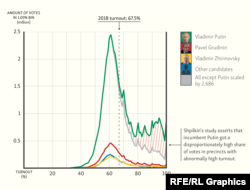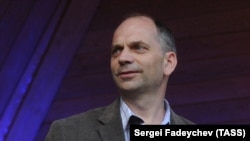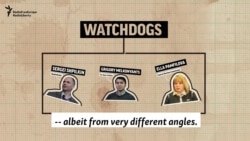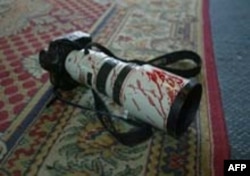Seeing 'Churov's Saw': Russian Researcher Says Putin May Have Received 10 Million Fraudulent Votes
- By Carl Schreck
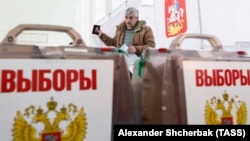
Humans love round numbers, and Russian election officials appear to be no exception.
Official data from Russia’s March 18 presidential election shows that many polling stations reported turnout in percentages ending in 0 or 5 -- a phenomenon that a prominent researcher says demonstrates clear manipulations at the ballot box.
The analysis by Sergei Shpilkin, a physicist by training who is renowned for his studies of Russian elections, suggests President Vladimir Putin may have received more than 10 million falsified votes nationwide in his landslide victory, which handed him a fresh six-year term.
Shpilkin, a winner of the independent PolitProsvet award in 2012 for his examination of Russian elections, posted his updated analysis of Putin’s latest reelection on his Facebook page on March 20.
Using official voting data from Russia’s Central Election Commission, Shpilkin plots the vote tallies for the eight candidates reported at every polling station against the turnout.
In fair elections, statisticians would expect the graph to form a bell curve whose peak is close to the average turnout for the election nationwide. Instead, the graph shows that in precincts reporting anomalously high turnout, Putin received a seemingly disproportionate number of the “extra” votes.
Shpilkin estimates the number of suspected falsified votes at around 10.3 million, though eliminating those votes would not have prevented Putin’s first-round win in an election critics derided as democratic window dressing.
Shpilkin says the scale of the alleged falsifications appears to be the lowest since after Putin’s first reelection in 2004.
“Back then, it was around 9 million extra votes,” he told RFE/RL on March 20.
There were “notable falsifications” in as many as 27 regions, Shpilkin said, a decrease of around 10 regions compared to Putin’s election in 2012.
Such statistical analyses are not proof of voter fraud, and critics of Shpilkin and researchers conducting similar studies have contended that regional political particularities in Russia could explain abnormal statistical distribution.
Shpilkin, however, told RFE/RL that vote data for certain regions this time around appeared markedly less suspicious than in previous years.
This suggests that political developments -- such as the 2015 firing of the governor in Russia’s northern Komi Republic -- rather than political culture may explain the presence or absence of anomalous election results in certain regions, Shpilkin said.
Shpilkin’s graph also shows Putin’s vote curve becoming jarringly jagged as it moves right, with spikes at round turnout figures such as 70, 75, 80, 85, 90, and 95.
The visualization of this phenomenon when plotted out has been dubbed “Churov’s saw” after former Central Election Commission head Vladimir Churov, who oversaw several elections rife with fraud allegations.
Shpilkin told RFE/RL that the probability of this round-number phenomenon -- which he and two co-authors have studied in the context of Russian elections -- without manipulations at the ballot boxes is “astronomically” low.
He linked the “Churov’s saw” for turnout in the election, which Putin won with nearly 77 percent of the vote, to the Kremlin’s push to boost turnout and demonstrate the incumbent’s broad mandate.
“There is a saw,” Shpilkin told RFE/RL. “It’s very beautiful and nice.”




